

|
|
Man Hunt (Blu-ray)
[Blu-ray]
Blu-ray B - United Kingdom - Signal One Entertainment Review written by and copyright: Paul Lewis (19th June 2017). |
|
The Film
 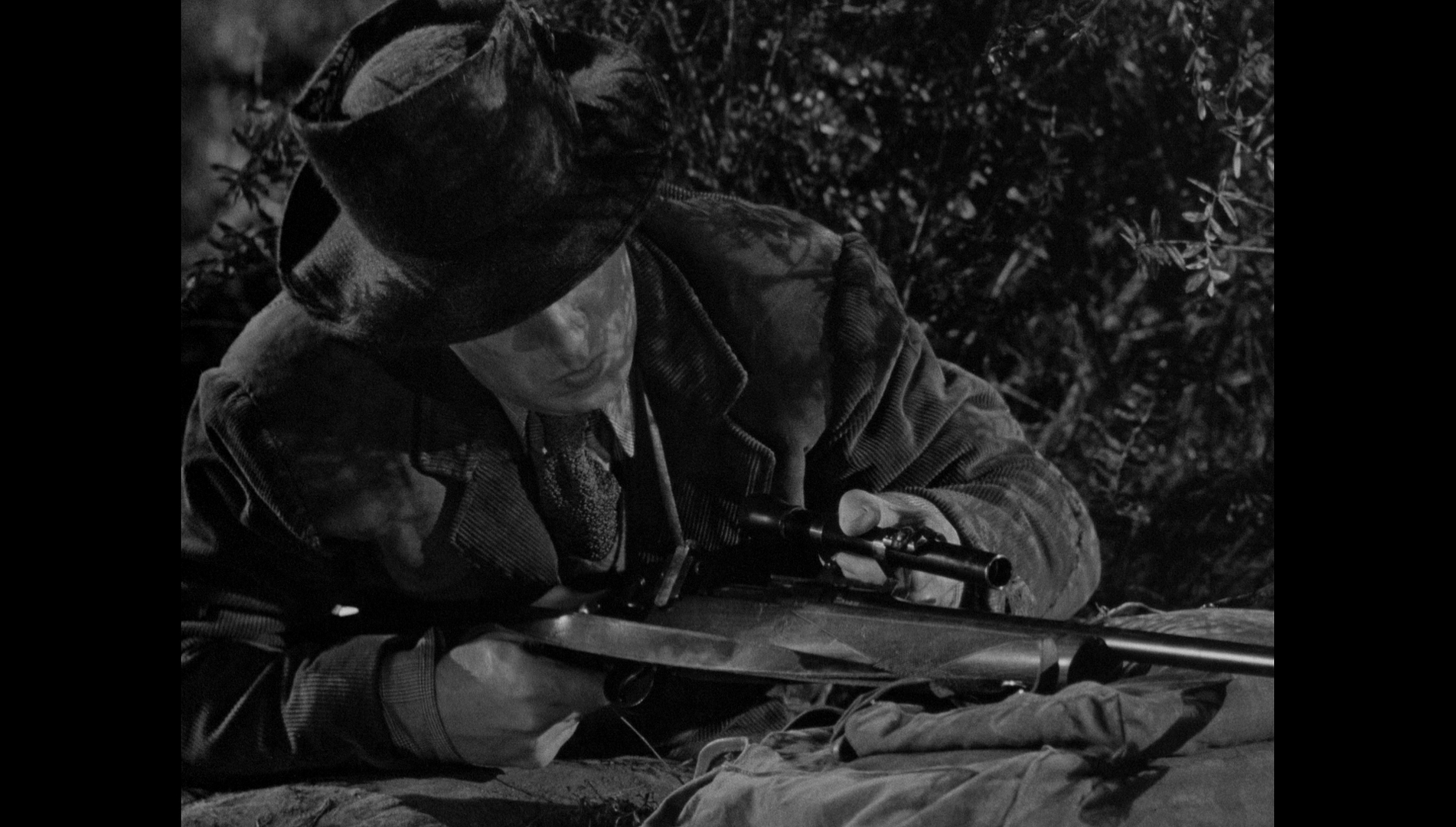 Man Hunt (Fritz Lang, 1941) Man Hunt (Fritz Lang, 1941)
Adapted from Geoffrey Household’s novel Rogue Male (1938), Man Hunt (1941) was the first of a number of anti-Nazi films that German émigré director Fritz Lang made during the Second World War, sitting alongside Hangmen Also Die (1943, recently released on Blu-ray by Arrow and reviewed by us here), The Ministry of Fear (1944) and Cloak and Dagger (1946). All four films, Peter Bogdanovich has argued, ‘are characterized by an intense personal involvement, a vivid awareness of the fascist mind, missing from other similar movies of that era’ (Bogdanovich, 1997: np). In particular, Man Hunt may to some extent be considered a companion piece to Lang’s later wartime spy drama Cloak and Dagger: where Cloak and Dagger is set towards the end of the Second World War and deals with the conclusion of the conflict, Man Hunt is set in the days prior to the Second World War and focuses on its commencement. Man Hunt opens in pre-war Germany, where famous hunter Alan Thorndike (Walter Pidgeon) works his way through a forest, avoiding patrolling German soldiers. Thorndike takes a position on a ledge and sights his rifle on Hitler. However, before Thorndike can kill the Fuhrer, a German soldier leaps upon Thorndike, causing the gun to be discharged into the air. 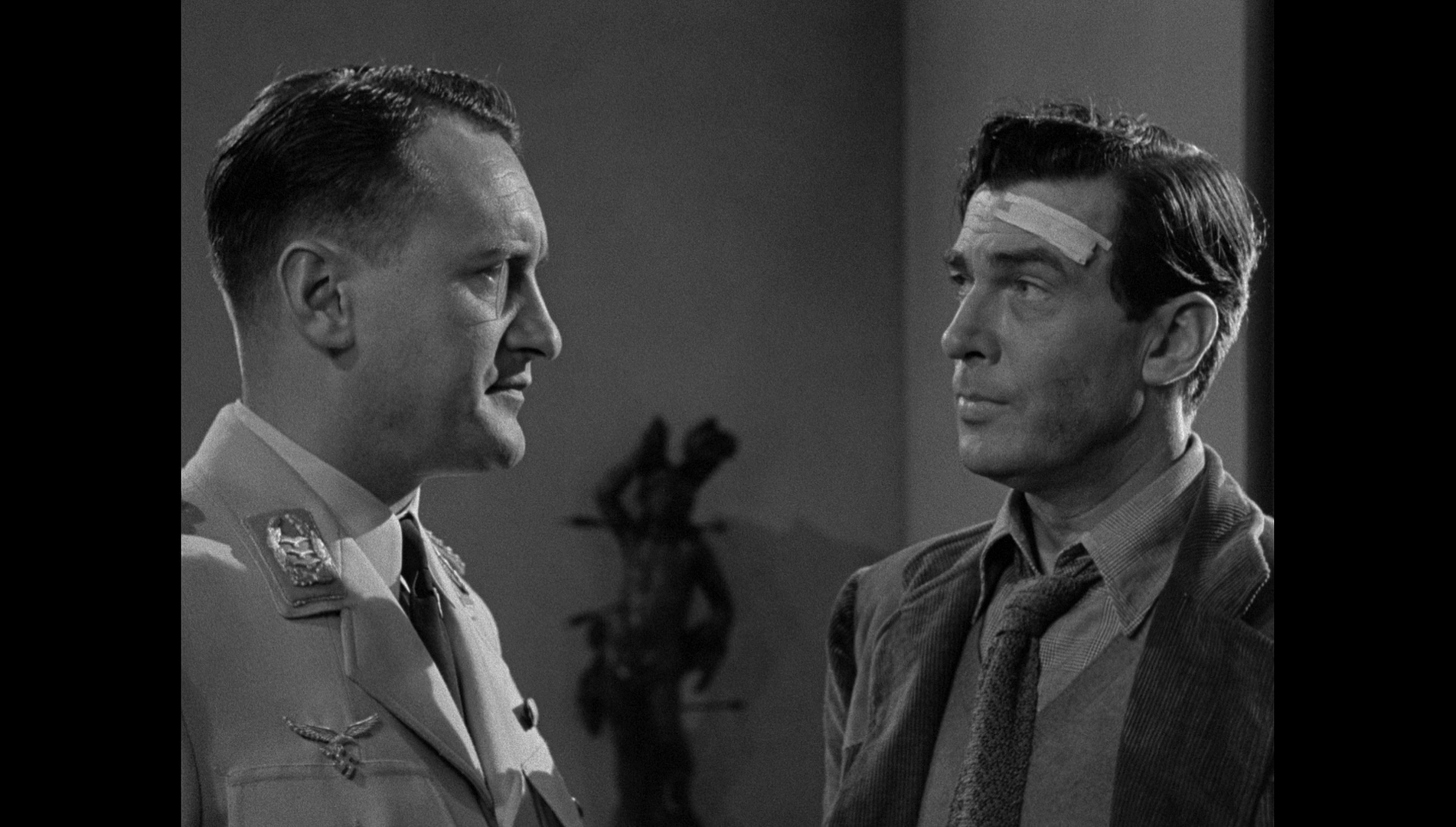 Thorndike is taken into the building and beaten. He is interrogated by Major Quive-Smith of the Gestapo (George Sanders). Thorndike insists that he had no intention to kill Hitler: he was simply participating in a ‘sporting stalk’. However, Quive-Smith doesn’t believe him, and insists that Thorndike must sign a declaration that he acted under the orders of the British government – thus precipitating a conflict between the two nation states. Thorndike refuses and is tortured. Thorndike is taken into the building and beaten. He is interrogated by Major Quive-Smith of the Gestapo (George Sanders). Thorndike insists that he had no intention to kill Hitler: he was simply participating in a ‘sporting stalk’. However, Quive-Smith doesn’t believe him, and insists that Thorndike must sign a declaration that he acted under the orders of the British government – thus precipitating a conflict between the two nation states. Thorndike refuses and is tortured.
Quive-Smith has Thorndike thrown from a ledge, believing that Thorndike will surely be killed by the fall and the death declared an accident. However, the next day Quive-Smith discovers that Thorndike has survived. Thorndike flees through the countryside and steals aboard a Danish ship that is headed for London. Thorndike is hidden aboard the ship by young British sailor Vaner (Roddy McDowall). Thorndike and Vaner soon discover that the Gestapo have demanded that the ship’s captain take aboard a passenger, a Nazi spy masquerading as Thorndike. Alighting the ship in London, Thorndike soon discovers that he is being followed by German spies. Fearing for his life, he sneaks into the flat of a young woman, Jerry Stokes (Joan Bennett). He borrows money from Jerry for a cab to take him to the home of his brother, Lord Gerald Risborough (Frederick Worlock), and Gerald’s wife Lady Alice Risborough (Heather Thatcher). Having taken a shine to Thorndike, Jerry insists on accompanying him. Thorndike is pursued by the Nazi agents. Following an exciting foot chase on the underground, Thorndike kills the man impersonating him by pushing him on to the ‘third rail’. The newspapers report that the real Thorndike was killed, however, and the police are looking for his murderer. Thorndike reflects that ‘Now they [the Nazis] can hunt me down at leisure and with the help of the British police’. 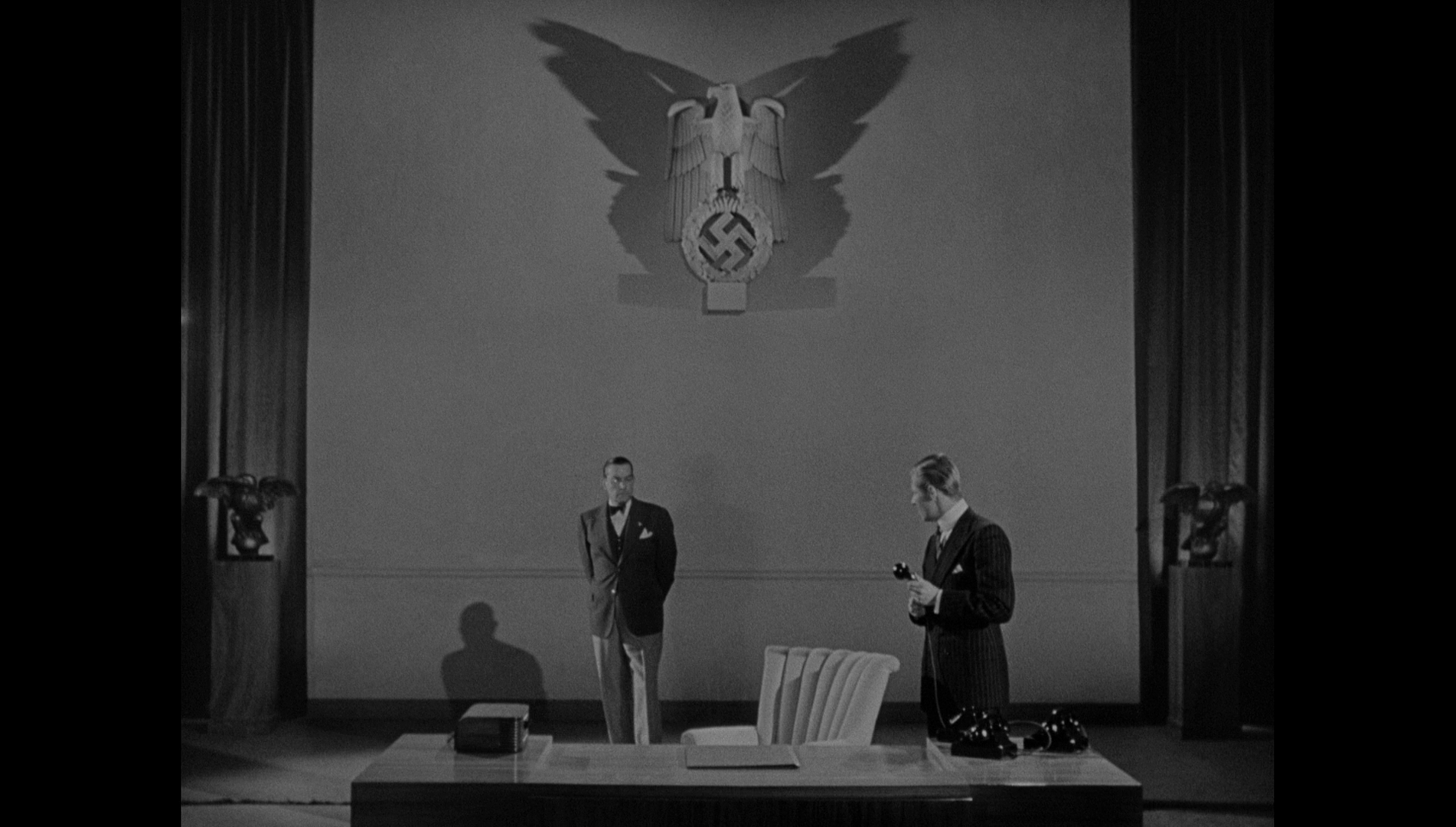 Thorndike’s treatment at the hands of the Nazis turns this sportsman into a fugitive: the hunter becomes the hunted, this transition to some extent echoing Richard Connell’s 1924 story ‘The Hounds of Zaroff’/‘The Most Dangerous Game’, in which a big game hunter from New York is hunted across a Caribbean island by Zaroff, a Russian aristocrat. As Lutz Koepnick has noted, ‘Man Hunt was designed as a conversion narrative. Thorndike’s transformation of hunter into assassin, of sportsman into soldier, showcases the primacy of political commitments over the luxuries of personal leisure and freedom, and in doing so the film clearly warns against any isolationist rhetoric declaring the war to be merely a European affair’ (Koepnik, 2015: 418). Thorndike’s treatment at the hands of the Nazis turns this sportsman into a fugitive: the hunter becomes the hunted, this transition to some extent echoing Richard Connell’s 1924 story ‘The Hounds of Zaroff’/‘The Most Dangerous Game’, in which a big game hunter from New York is hunted across a Caribbean island by Zaroff, a Russian aristocrat. As Lutz Koepnick has noted, ‘Man Hunt was designed as a conversion narrative. Thorndike’s transformation of hunter into assassin, of sportsman into soldier, showcases the primacy of political commitments over the luxuries of personal leisure and freedom, and in doing so the film clearly warns against any isolationist rhetoric declaring the war to be merely a European affair’ (Koepnik, 2015: 418).
In the opening sequence, Thorndike places Hitler in the telescopic sights of his rifle. He pulls the trigger on an empty chamber before deciding to load the rifle, then recentring the sights on Hitler. However, before he can pull the trigger again, he is spotted by a patrolling German soldier who leaps upon Thorndike, causing the gun to be discharged into the air. Interrogated by Quive-Smith following his capture, Thorndike insists that he wasn’t attempting to assassinate Hitler – just trying to see if it was possible for him to do so. The exercise was a ‘sporting stalk’, Thorndike claims; it’s a term that Quive-Smith throws back at Thorndike later in the film, when the tables have been turned and Thorndike finds himself the target of Nazi agents that pursue him through London. In Quive-Smith’s interrogation of Thorndike after Thorndike’s capture at the start of the film, Quive-Smith attempts to establish the similarities between himself and Thorndike: ‘Like you, Thorndike, I have but one passion in life’, Quive-Smith says, ‘the hunting of big game. I’m convinced I would have become even more famous than yourself if I hadn’t given it up in favour of politics’. In the interrogation Quive-Smith reveals that Thorndike’s brother, Gerald, was sent by the British government on a mission of appeasement a year prior: ‘I found him [Gerald] a credulous simpleton’, Quive-Smith states. Thorndike’s ‘mission’, on the other hand, is the exact opposite of his brother’s. However, Thorndike insists that he didn’t intend to kill Hitler: ‘I never intended to shoot’, he says, ‘I only wanted to find out whether it were possible [….] The sport is the chase, not the kill [….] I know what I can do with a rifle. If I can stalk my prey and get in range, the rest is a mathematical certainty’. 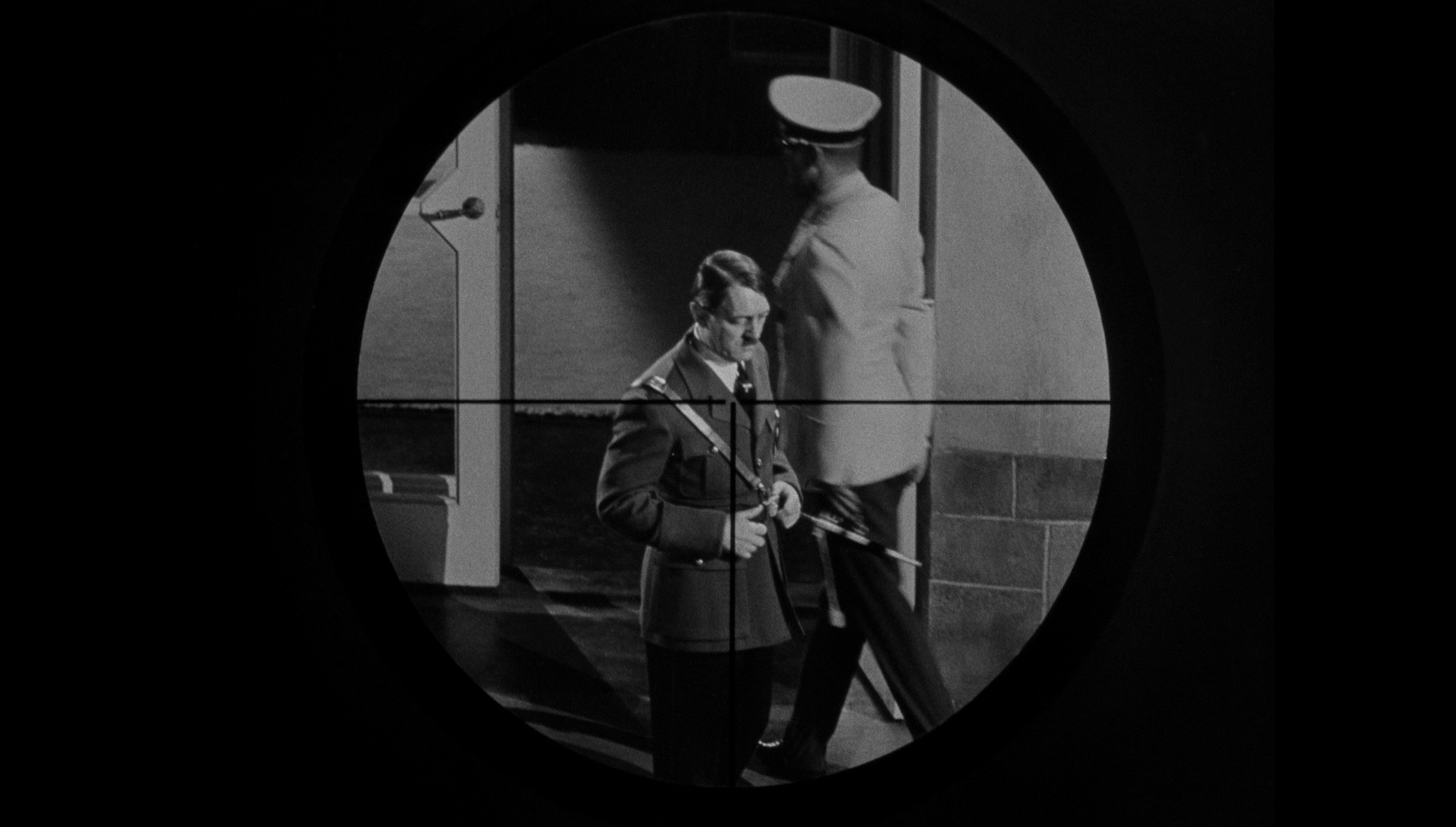 The interrogation scene deftly outlines the cultural differences between Thorndike and his captor. Quive-Smith is a true believer, a Nazi idealist who asserts that the Nazis are going to build a new world. ‘By going back to the barbarity of decapitation?’, Thorndike asks sharply. Meanwhile, Quive-Smith responds by criticising English notions of gamesmanship: ‘Nothing betrays the hypocrisy of the English more than their use of the phrase “playing the game”. You play the game to win’, he insists. Thorndike refuses to bow to the brutality of the Nazi regime, telling Quive-Smith ‘You force your own people to keep in line, and you think you can force someone else. Well, I’m one man who’ll say you can’t’. At the climax of the film, Quive-Smith promises Thorndike that ‘I’m going to break through that English mask you were born with. I’m going to show you who you were and are: an assassin’. Thorndike’s refusal to sign the confession presented to him by Quive-Smith is both an act of personal defiance and a patriotic gesture: as Gerald reminds Thorndike later in the film, if Thorndike were to sign the confession that claims he was ordered to kill Hitler by the British government, ‘Not you, but England would be convicted’ and the Nazis would get ‘what they want: war’. The interrogation scene deftly outlines the cultural differences between Thorndike and his captor. Quive-Smith is a true believer, a Nazi idealist who asserts that the Nazis are going to build a new world. ‘By going back to the barbarity of decapitation?’, Thorndike asks sharply. Meanwhile, Quive-Smith responds by criticising English notions of gamesmanship: ‘Nothing betrays the hypocrisy of the English more than their use of the phrase “playing the game”. You play the game to win’, he insists. Thorndike refuses to bow to the brutality of the Nazi regime, telling Quive-Smith ‘You force your own people to keep in line, and you think you can force someone else. Well, I’m one man who’ll say you can’t’. At the climax of the film, Quive-Smith promises Thorndike that ‘I’m going to break through that English mask you were born with. I’m going to show you who you were and are: an assassin’. Thorndike’s refusal to sign the confession presented to him by Quive-Smith is both an act of personal defiance and a patriotic gesture: as Gerald reminds Thorndike later in the film, if Thorndike were to sign the confession that claims he was ordered to kill Hitler by the British government, ‘Not you, but England would be convicted’ and the Nazis would get ‘what they want: war’.
As Jerry, Joan Bennett embodies ‘Cockernee’ stereotypes, her dialogue being of the ‘Cor blimey, guv’nor’ school, something made all the more apparent for the audience by the manner in which, for most of the film, it’s contrasted with the Received Pronunciation of the other key members of the film’s cast. Jerry’s use of dialect and slang is often employed for comic effect (‘Are the rozzers after ‘im?’, she asks at one point). There’s a wonderful scene in which Jerry is looked down upon by Alice, Gerald’s wife, who seems appalled at the idea she should shake Jerry’s hand and disgusted by the presence of Jerry in her home. Later, the morning after Thorndike has spent the night in her flat, Jerry goes out and returns with breakfast: fish and chips. Thorndike is confused by the lack of cutlery, until Jerry tells him he must eat the fish and chips with his hands – a gesture which underscores the cultural differences between the privileged Thorndike and the proletarian Jerry. 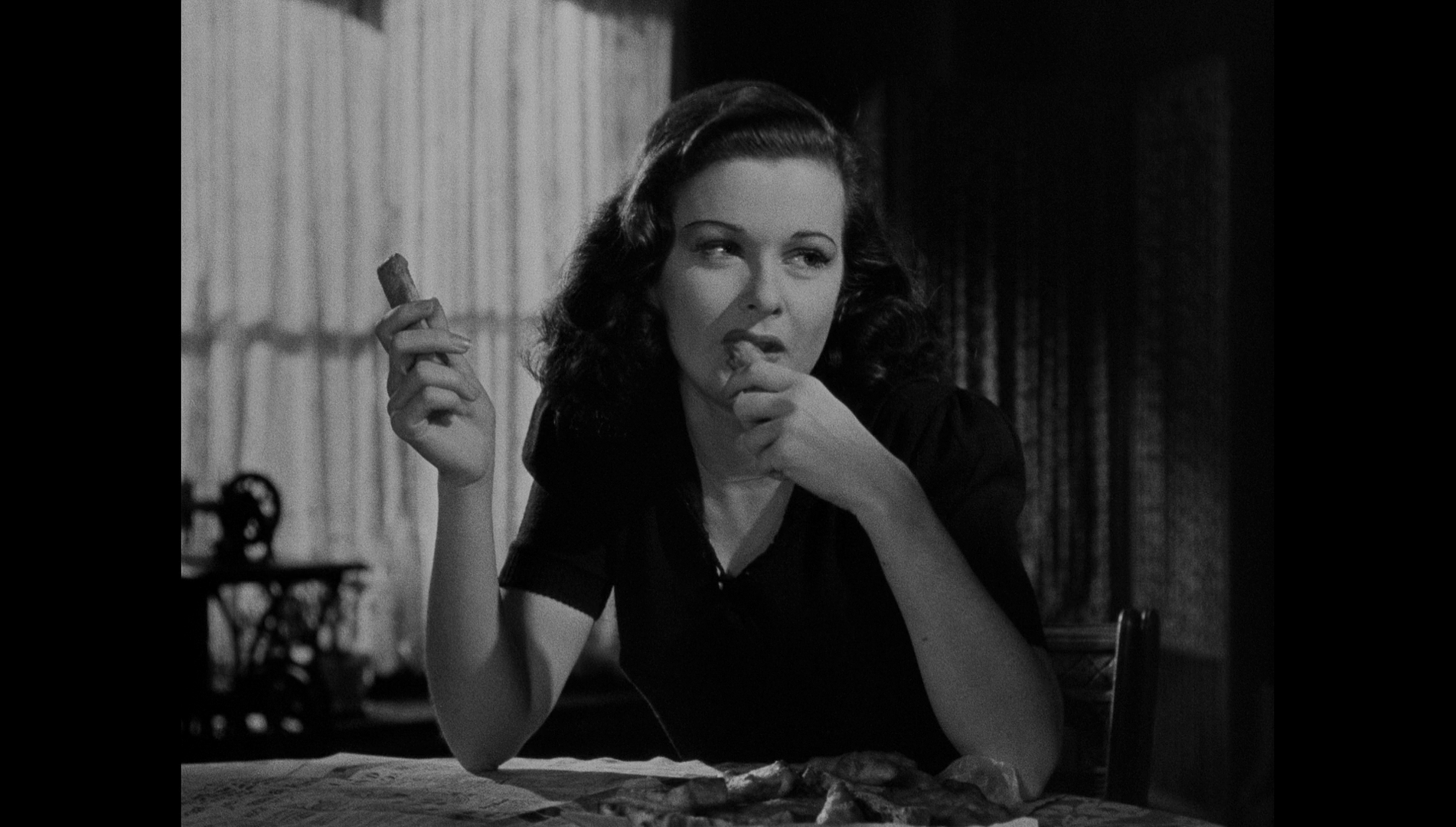 Though never stating it directly, the script suggests quite strongly that Bennett’s character is a prostitute – most obviously, through the distasteful manner in which she is treated by some of the other characters, including Alice and the police officer who sends her home following her farewell to Thorndike. When Thorndike, in Jerry’s flat, sees a bobby down below, Jerry comments that she knows the policeman well; and she talks of the gifts she has received from ‘gentlemen’, also suggesting through her dialogue that Thorndike is both a gentleman but not one of the type with which she usually mixes (ie, that he’s similar in social class to her usual clients but doesn’t want sex from her). When Thorndike steals into Jerry’s flat and prepares to sleep on the sofa, Jerry sobs – suggesting she’s not used to men turning down a place in her bed. She even insists to Reeves, Gerald’s butler, that she remembers him from an incident in which he propositioned her; this is something that Reeves denies vigorously, of course. Towards the end of the film, Quive-Smith highlights Jerry’s status as a woman of questionable virtue, telling Thorndike ‘You believed that the death of our sacred Fuhrer would be no loss to the world, Thorndike; surely the death of a girl like that would be no loss at all’. Though never stating it directly, the script suggests quite strongly that Bennett’s character is a prostitute – most obviously, through the distasteful manner in which she is treated by some of the other characters, including Alice and the police officer who sends her home following her farewell to Thorndike. When Thorndike, in Jerry’s flat, sees a bobby down below, Jerry comments that she knows the policeman well; and she talks of the gifts she has received from ‘gentlemen’, also suggesting through her dialogue that Thorndike is both a gentleman but not one of the type with which she usually mixes (ie, that he’s similar in social class to her usual clients but doesn’t want sex from her). When Thorndike steals into Jerry’s flat and prepares to sleep on the sofa, Jerry sobs – suggesting she’s not used to men turning down a place in her bed. She even insists to Reeves, Gerald’s butler, that she remembers him from an incident in which he propositioned her; this is something that Reeves denies vigorously, of course. Towards the end of the film, Quive-Smith highlights Jerry’s status as a woman of questionable virtue, telling Thorndike ‘You believed that the death of our sacred Fuhrer would be no loss to the world, Thorndike; surely the death of a girl like that would be no loss at all’.
The film’s boldness in this and in its depiction of Germans as Nazis caused problems with the Hays office, who demanded that Jerry be positioned within the script as a seamstress (though the completed film offers little evidence of this occupation, other than the presence of a sewing machine in her flat). With the film’s production and release being prior to America’s involvement in the Second World War, the Hays office also demanded that Lang soften the representation of the Nazis as out-and-out bastards. Lang refused to change the script, however, choosing instead to soften the depiction of their violence: for example, by having the violence towards Thorndike enacted offscreen and suggested through the use of sound, light and shadow – for example, the shadow of the tortured Thorndike (offscreen, seated in a chair) cast across the floor in front of the Gestapo officer responsible for his brutal treatment. 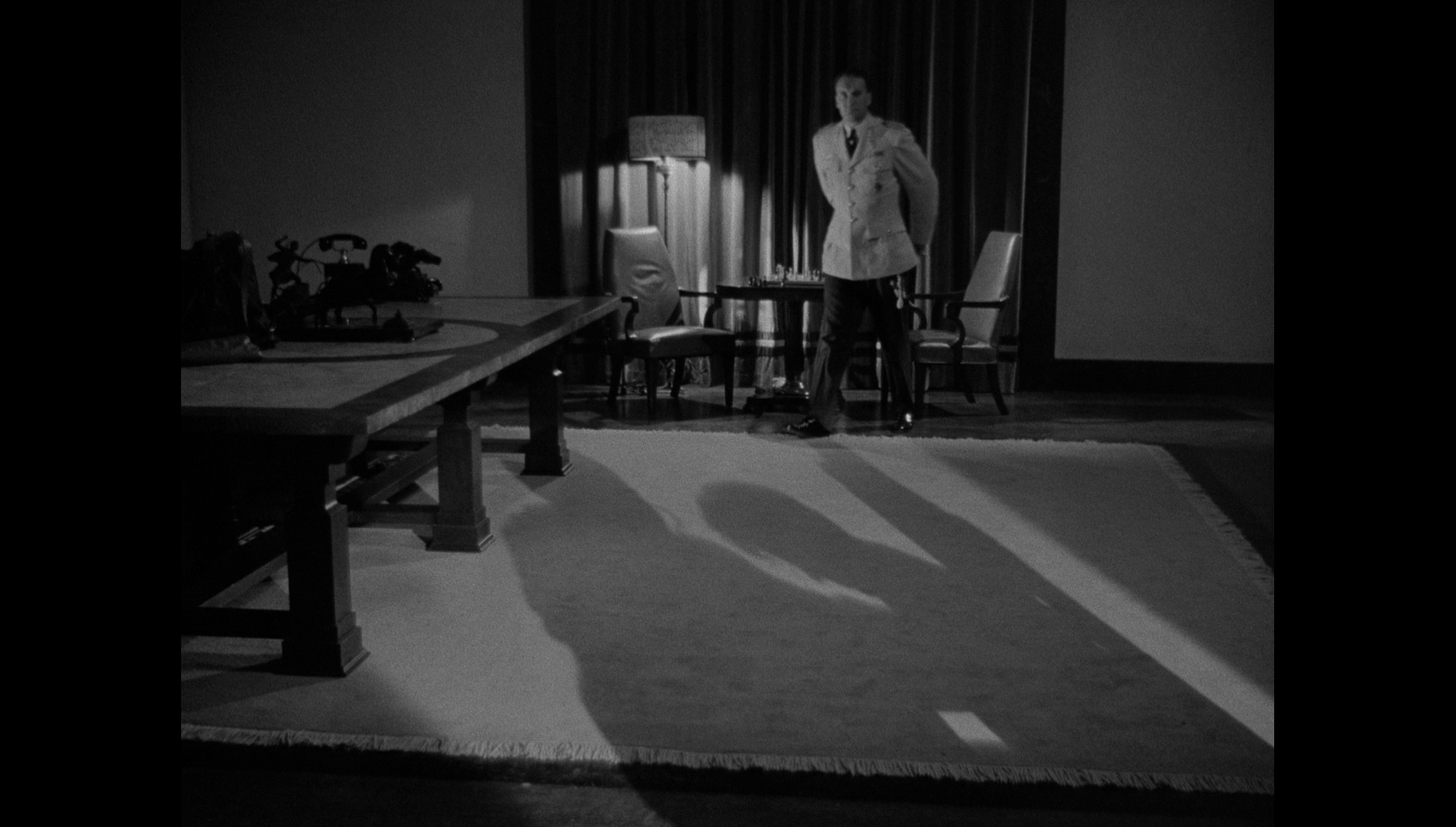 Lang’s collaboration with Bennett on Man Hunt eventually led to Lang forming Diana Productions with Bennett and Bennett’s husband, Walter Wanger; this led to Lang making two films on which he had almost complete control which, in the context of Lang’s career within American cinema, was extremely rare. Those two films were Scarlet Street (1945) and The Secret Beyond the Door (1947); the latter picture was a ‘flop’ which brought about the end of the short-lived Diana Productions. Lang’s collaboration with Bennett on Man Hunt eventually led to Lang forming Diana Productions with Bennett and Bennett’s husband, Walter Wanger; this led to Lang making two films on which he had almost complete control which, in the context of Lang’s career within American cinema, was extremely rare. Those two films were Scarlet Street (1945) and The Secret Beyond the Door (1947); the latter picture was a ‘flop’ which brought about the end of the short-lived Diana Productions.
Video
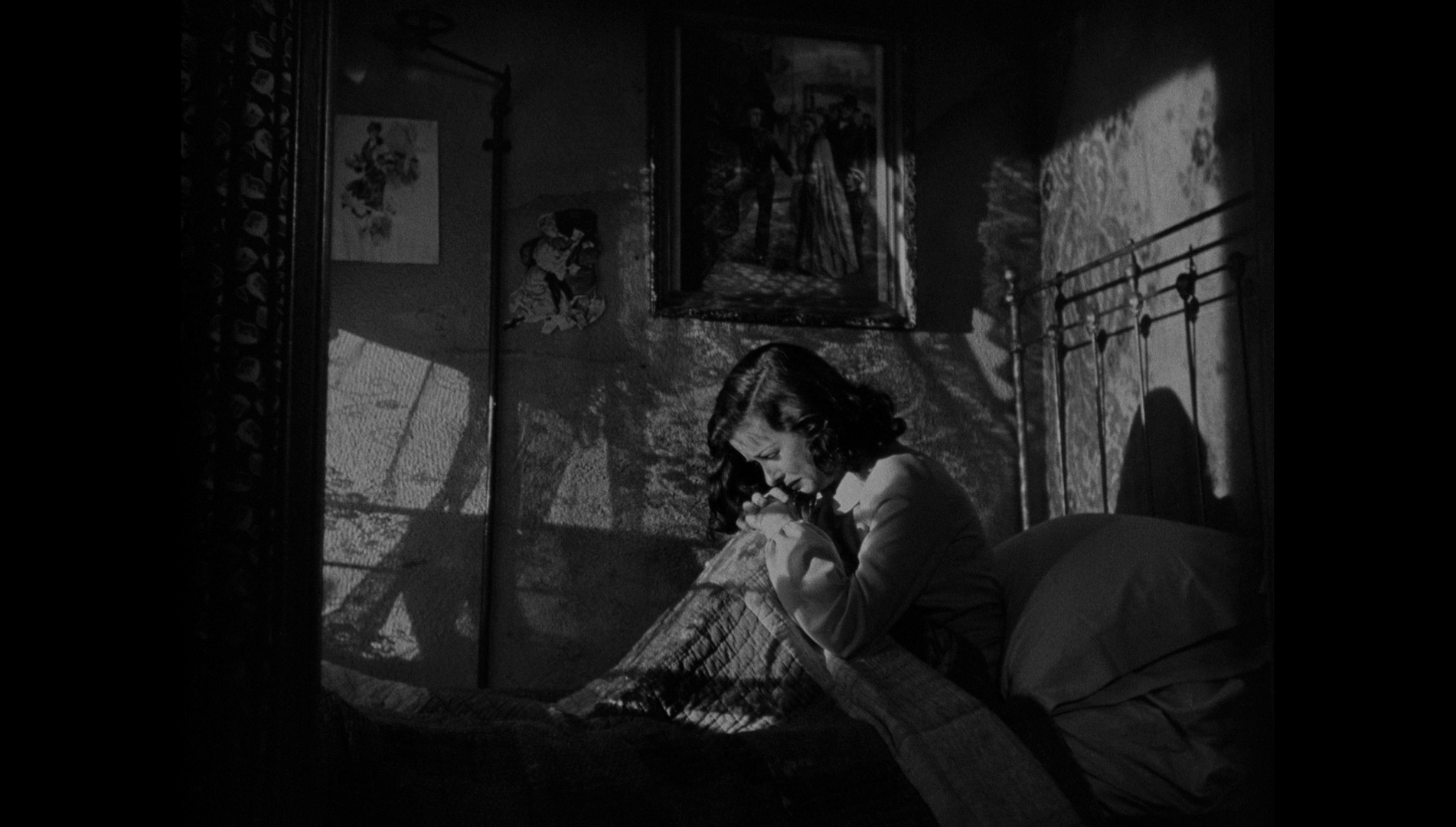 The film is uncut and runs for 102:27 mins. Taking up 28Gb of space on the Blu-ray disc, the 1080p presentation uses the AVC codec and is in the film’s original aspect ratio of 1.37:1. The film is uncut and runs for 102:27 mins. Taking up 28Gb of space on the Blu-ray disc, the 1080p presentation uses the AVC codec and is in the film’s original aspect ratio of 1.37:1.
Beautifully photographed by Arthur Miller, Man Hunt exhibits the qualities of Miller’s monochrome photography for films produced by Fox: ‘crisp definition, finely gradated grayscale, and a balanced use of sunlight or other heavy key lights’ (Cagle, 2014: 52). These are visual characteristics that can also be seen in Miller’s work on Edmund Golding’s The Razor’s Edge (1946) and Henry King’s The Song of Bernadette (1943). This presentation is excellent. The image is crisp, with lots of fine detail present throughout; this is evident in the film’s opening shots of foliage, which displays a texture and depth far above what was present in the film’s DVD releases. The film features much low-light photography, and contrast is beautiful: blacks are rich and deep, and the midtones are strongly defined. The HD presentation communicates that all important gradation from lowlights to highlights that is the core of monochrome photography. There’s no evidence of harmful digital tinkering (either noise reduction or sharpening). An excellent encode to disc ensures the presentation retains the structure of 35mm film.  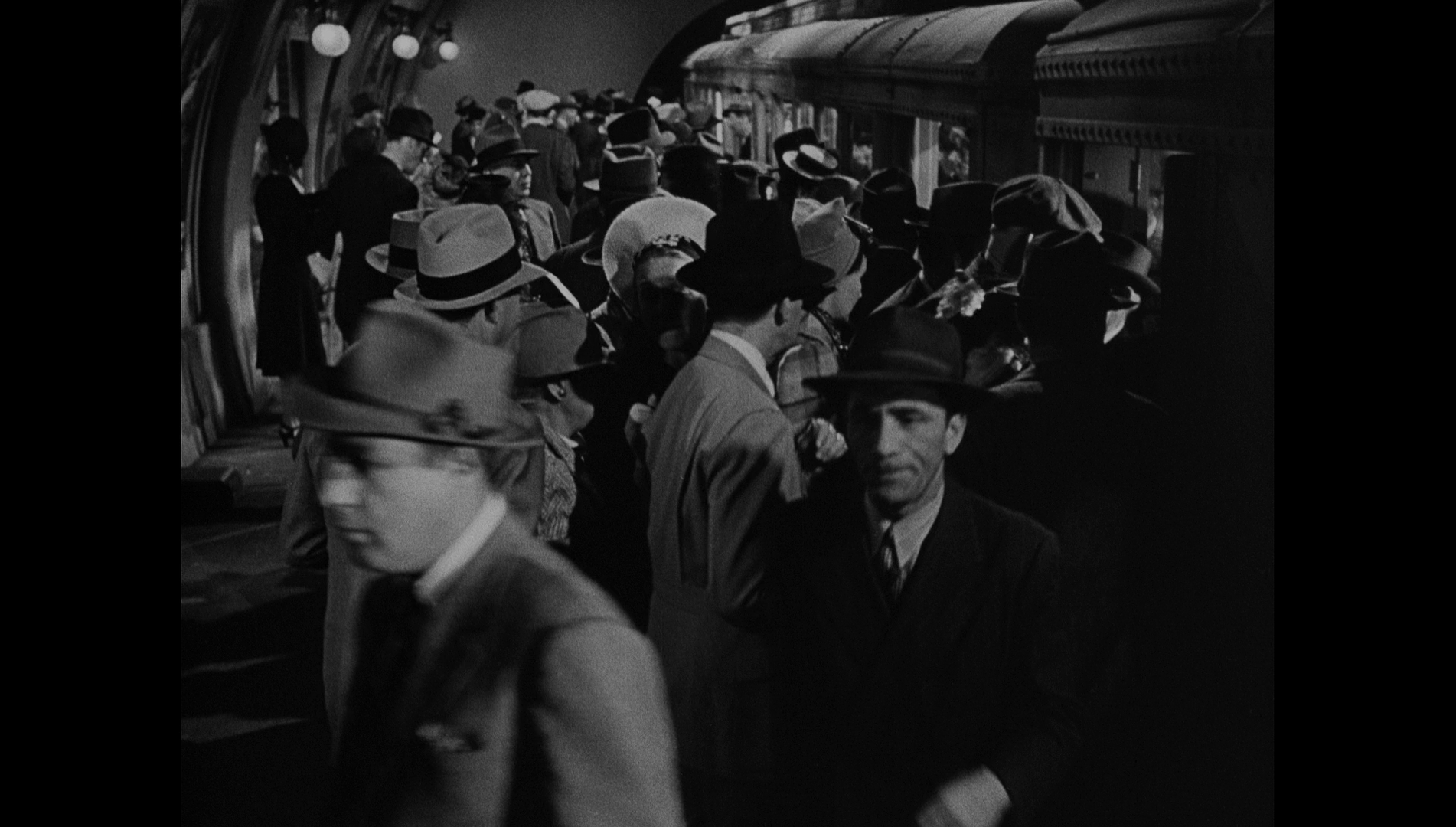 
Audio
Audio is presented by a LPCM 1.0 mono track. This is rich and clear, dialogue audible throughout. Optional English subtitles for the Hard of Hearing are provided. These are easy to read and free from errors.
Extras
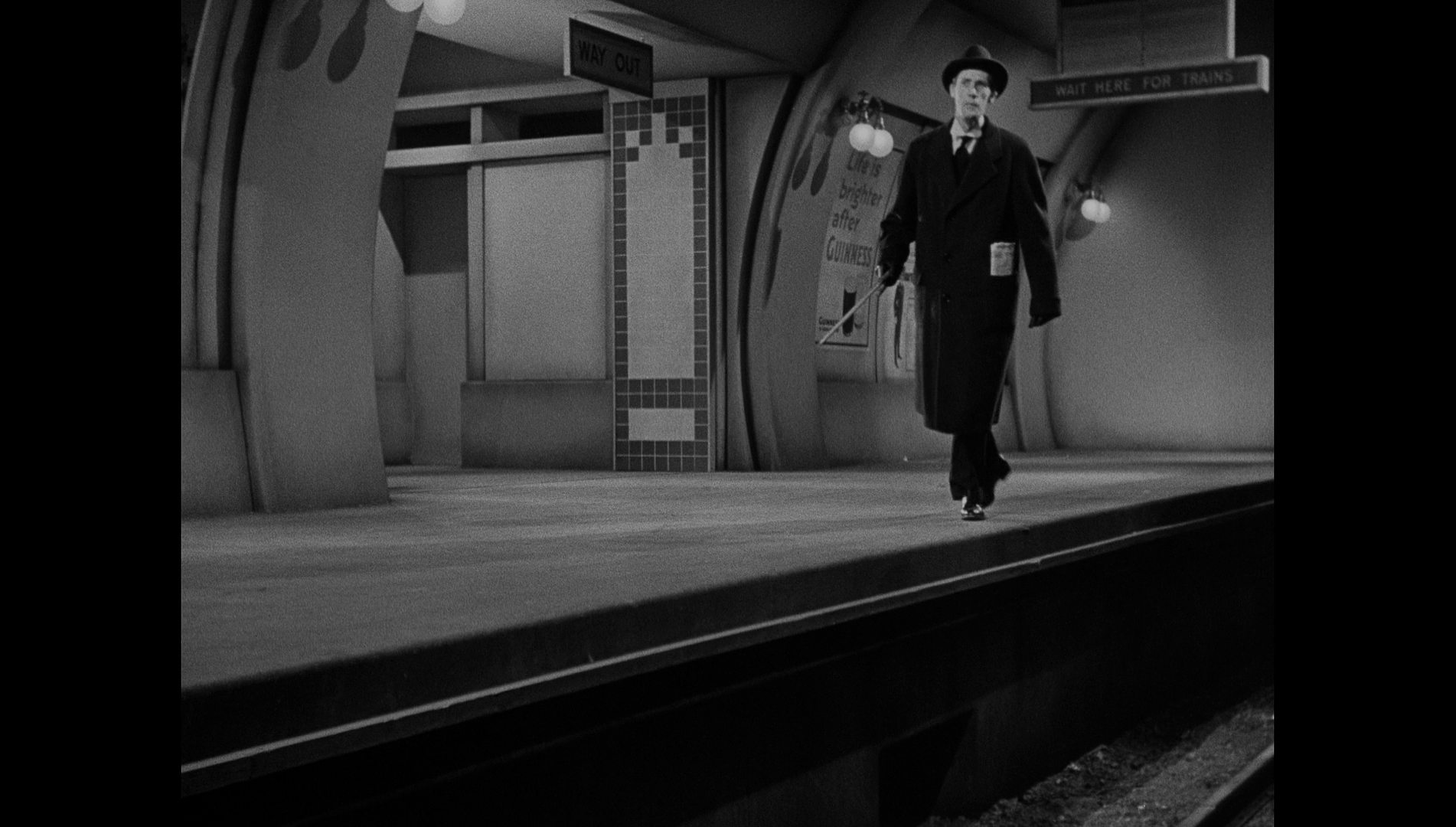 The disc includes the following contextual material: The disc includes the following contextual material:
- An audio commentary with Patrick McGilligan. In this commentary, McGilligan, the author of the 1998 book Fritz Lang: The Nature of the Beast, discusses the film’s origins in Household’s novel Rogue Male. McGilligan reflects on the contributions of the film’s photography and art direction, and discusses thoroughly elements of Lang’s style and the film’s themes. It’s a breathless and carefully-research commentary that is filled with information. - ‘The Biggest Game’ (20:57). This new interview with the Director of the UCLA’s Film and Television Archive, Jan-Christopher Horak, explores the origins of the film, the response of the Hays office and the picture’s relationship with its social context. Man Hunt is discussed alongside Lang’s other wartime anti-Nazi pictures. The film’s origins in Household’s Rogue Male are discussed, as is the original intention for the film to be directed by John Ford – and John Ford’s decision to back out of the project. - ‘The Woman is Dangerous’ (26:30). In another new interview, the granddaughter of Joan Bennett and Walter Wanger, Vanessa Wanger Hope, discusses the career of her grandmother before talking about her relationship with Walter Wanger. The significance of Man Hunt in Bennett’s career is examined. Vanessa Wanger Hope talks about her recent viewing of Man Hunt and elements of her grandmother’s performance in the picture. - ‘Rogue Male: The Making of Man Hunt’ (16:37). This featurette explores Man Hunt’s relationship with film noir, especially in its depiction of the urban environment as a labyrinthine, dangerous place. The novel and its qualities are discussed, as is Fritz Lang’s American career. Comments are given by Kim Newman, Patrick McGilligan, Drew Casper and others. This featurette previously appeared on the film’s US DVD release in 2009. - Promotional Gallery (0:46). - Still Gallery (1:07). - Trailer (1:50).
Overall
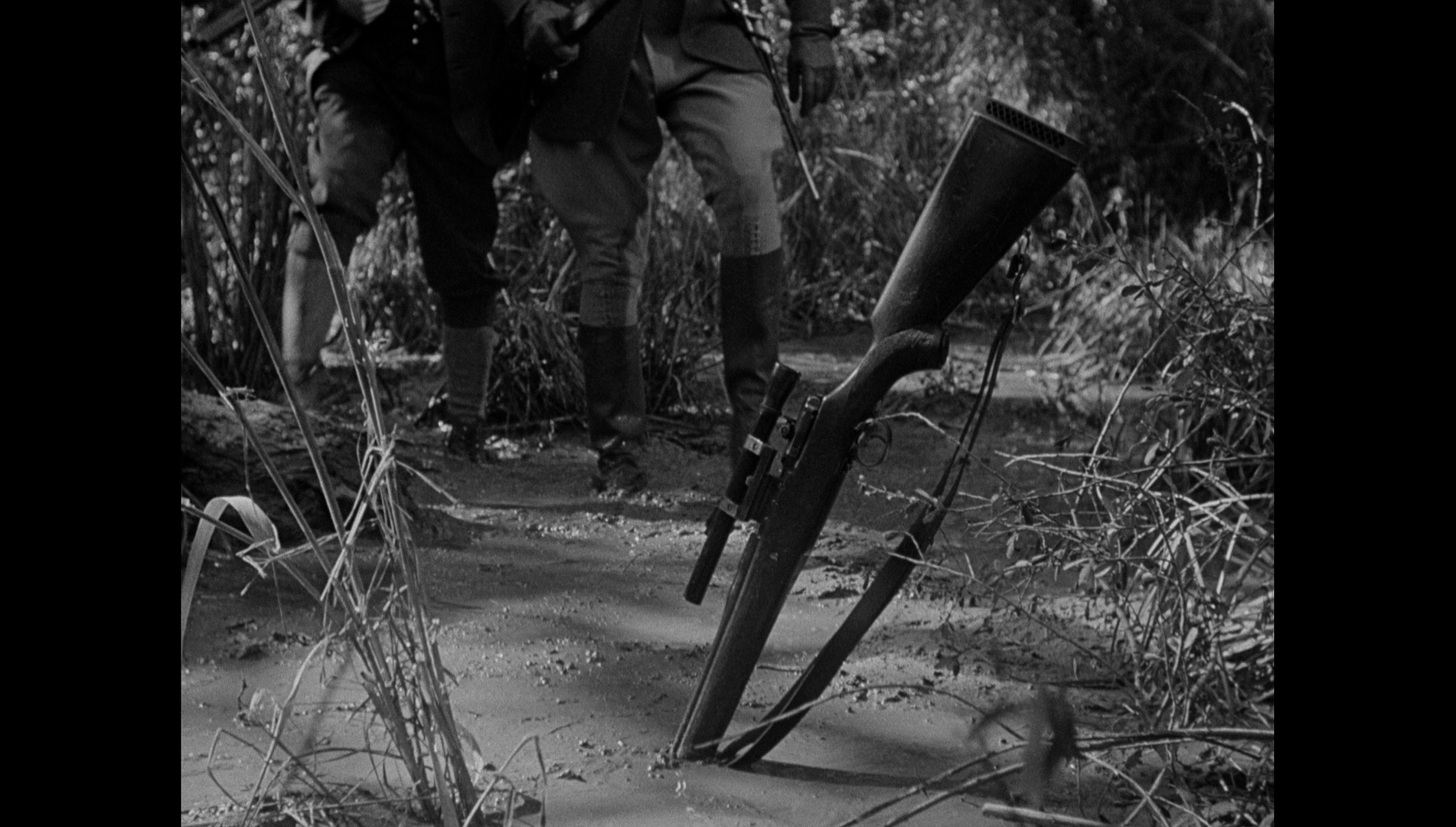 Lang’s Man Hunt is an excellent adaptation of Geoffrey Household’s novel, and though it sits amongst illustrious company, alongside The Ministry of Fear it’s arguably the best of Lang’s wartime anti-Nazi pictures. Through the persecution of Thorndike, both abroad and at home in London, the film creates a palpable sense of paranoia and leads to a challenging conclusion. It’s interesting to compare the picture with the 1976 television adaptation of the same novel, starring Peter O’Toole as Thorndyke. The script of Lang’s film is remarkably frank. It’s essential viewing, for fans of Lang or 1940s cinema. Lang’s Man Hunt is an excellent adaptation of Geoffrey Household’s novel, and though it sits amongst illustrious company, alongside The Ministry of Fear it’s arguably the best of Lang’s wartime anti-Nazi pictures. Through the persecution of Thorndike, both abroad and at home in London, the film creates a palpable sense of paranoia and leads to a challenging conclusion. It’s interesting to compare the picture with the 1976 television adaptation of the same novel, starring Peter O’Toole as Thorndyke. The script of Lang’s film is remarkably frank. It’s essential viewing, for fans of Lang or 1940s cinema.
Signal One’s new Blu-ray release contains a very impressive presentation of the main feature. It’s a presentation rich in detail and texture. The disc reproduces the featurette and commentary from the 2009 US DVD release, and adds two new interviews. The presentation, I would imagine, is based on the same source as the American Twilight Time release of the same picture, but where Signal One’s release sacrifices the isolated score contained on that disc, Signal One incorporates two new interviews with Jan-Christopher Horak, exploring the film’s relationship with its context, and Vanessa Wanger Hope, discussing the film in relation to her grandmother’s career as a screen actress. Grounded in the superb presentation, Signal One’s release of Man Hunt is an excellent release of an important and engaging film. References: Bogdanovich, Peter, 1997: Who the Devil Made It. New York: Ballantine Books Cagle, Chris, 2014: ‘Classical Hollywood, 1928-1946’. In: Keating, Patrick (ed), 2014: Cinematography. Rutgers State University: Pp.34-59 Koepnik, Lutz, 2015: ‘Not the End: Fritz Lang’s War’. In: McElhaney, Joe (ed), 2015: A Companion to Fritz Lang. London: John Wiley & Sons: Pp.415-29 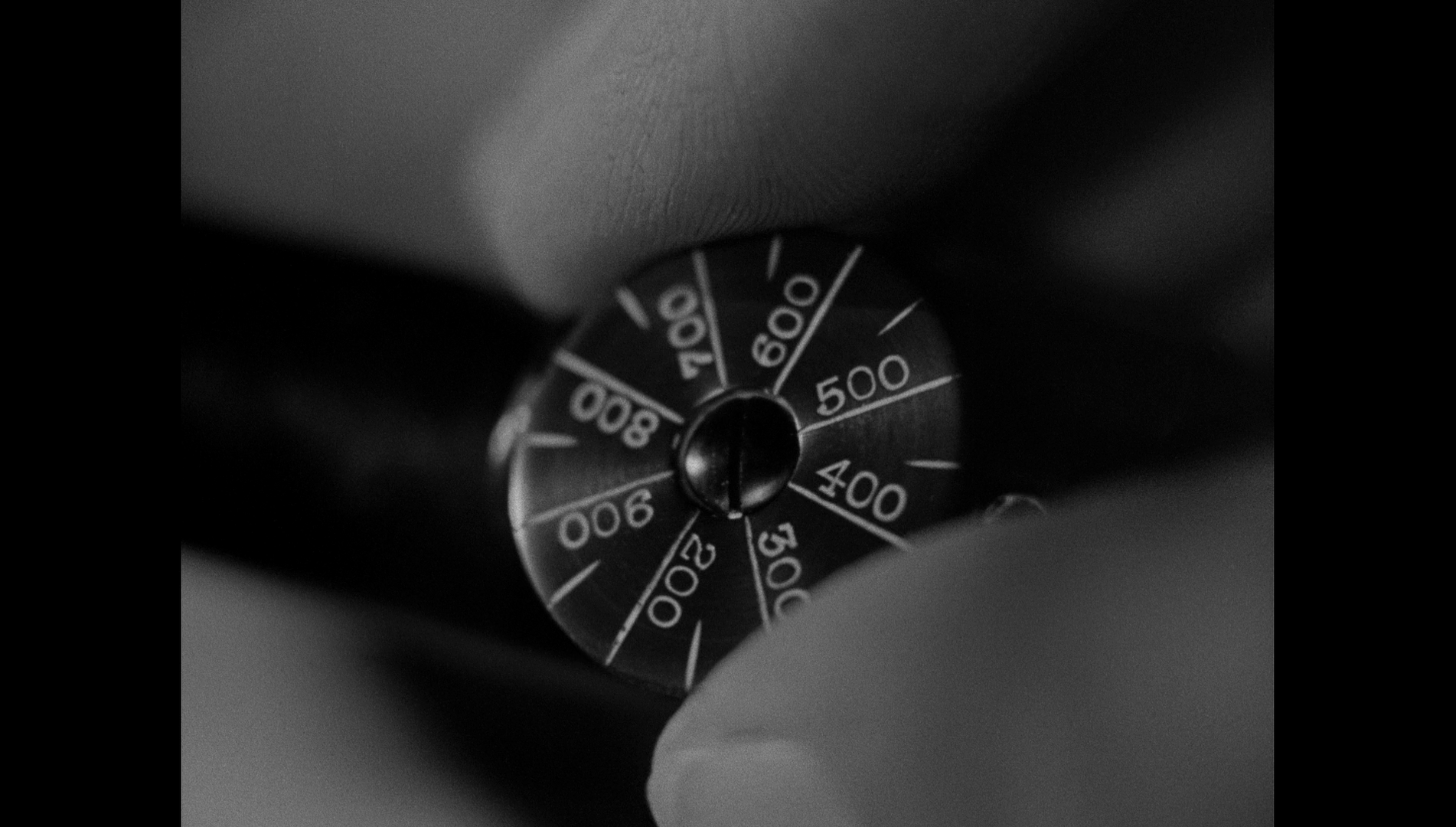
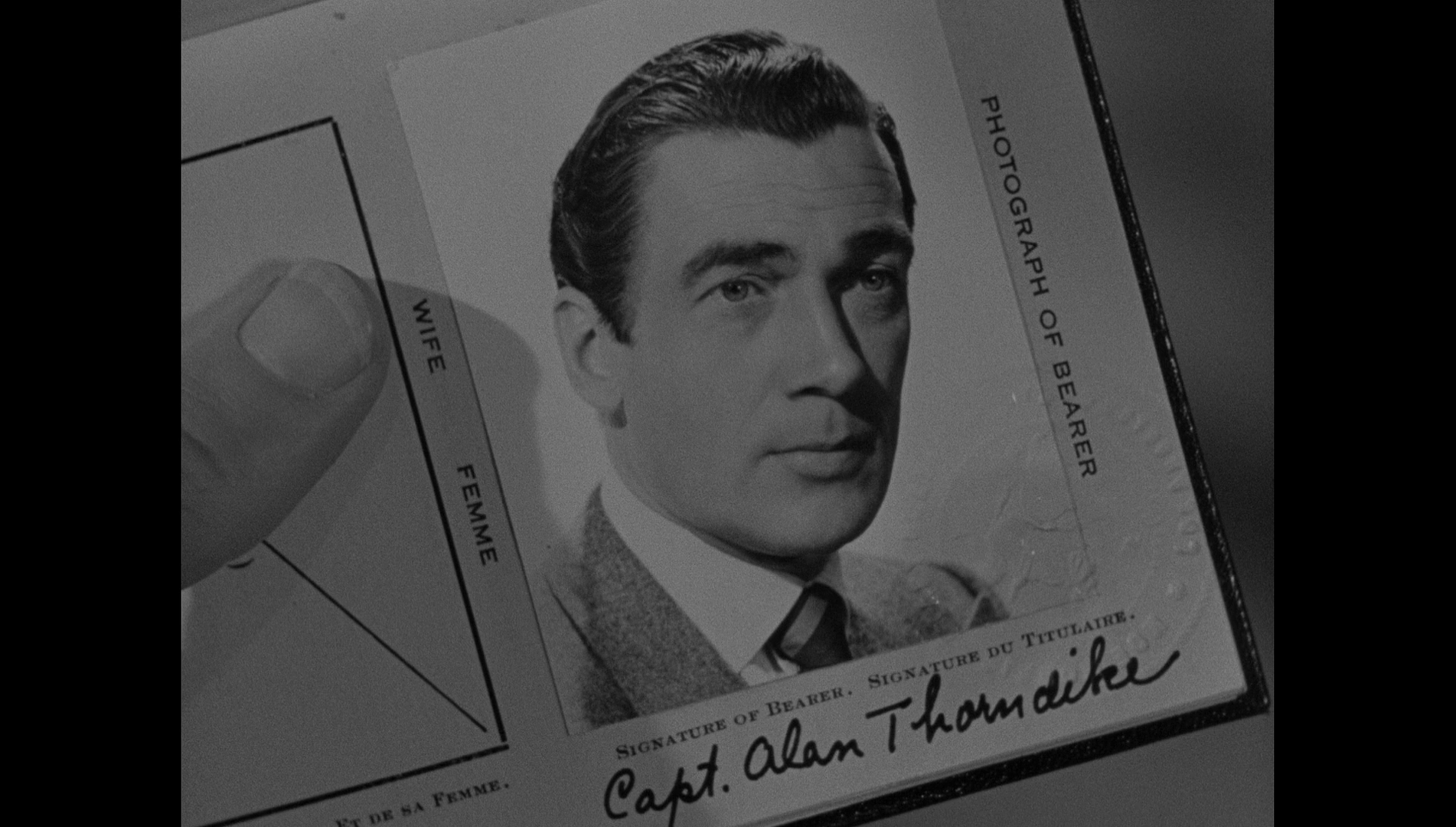
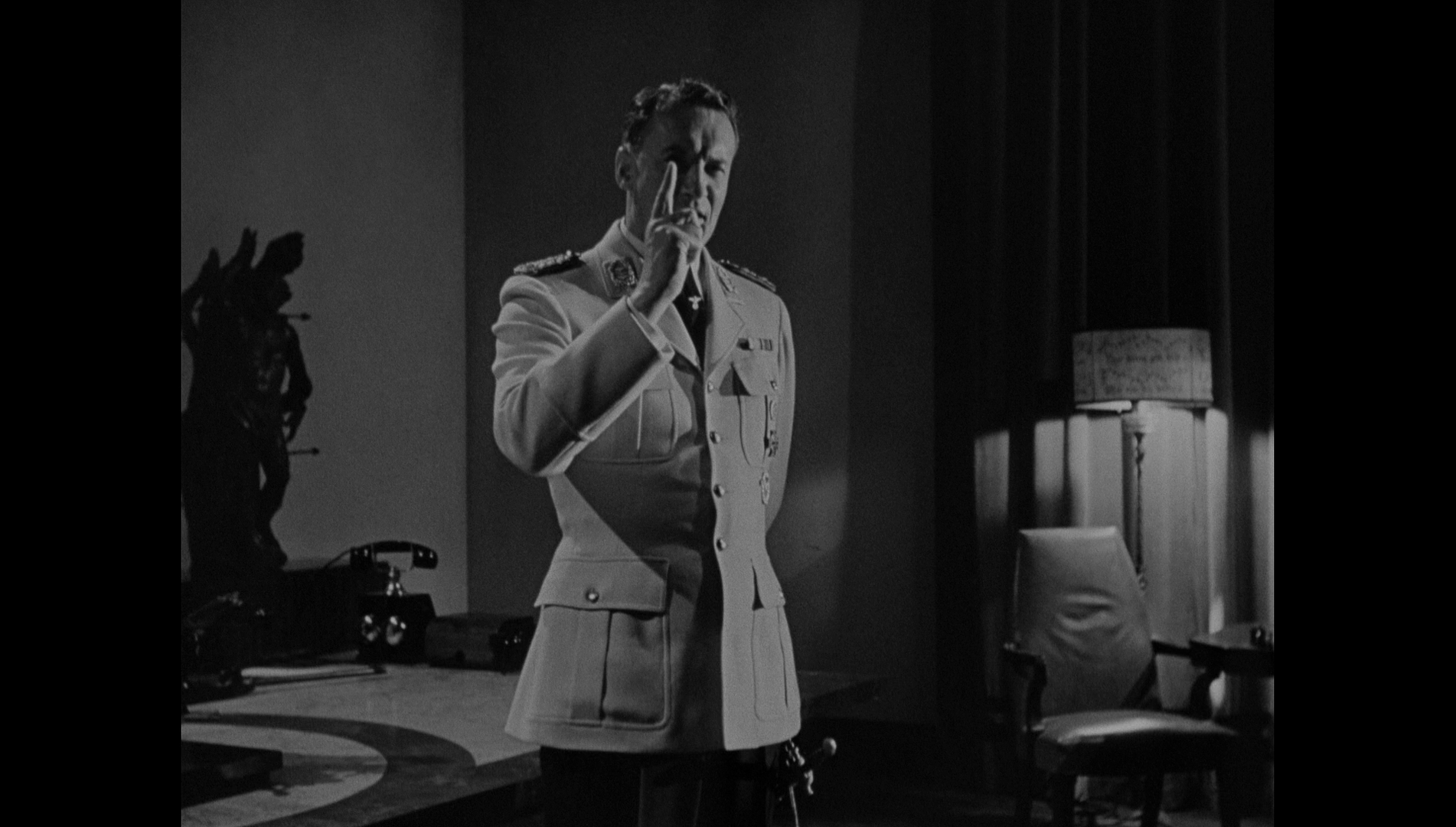
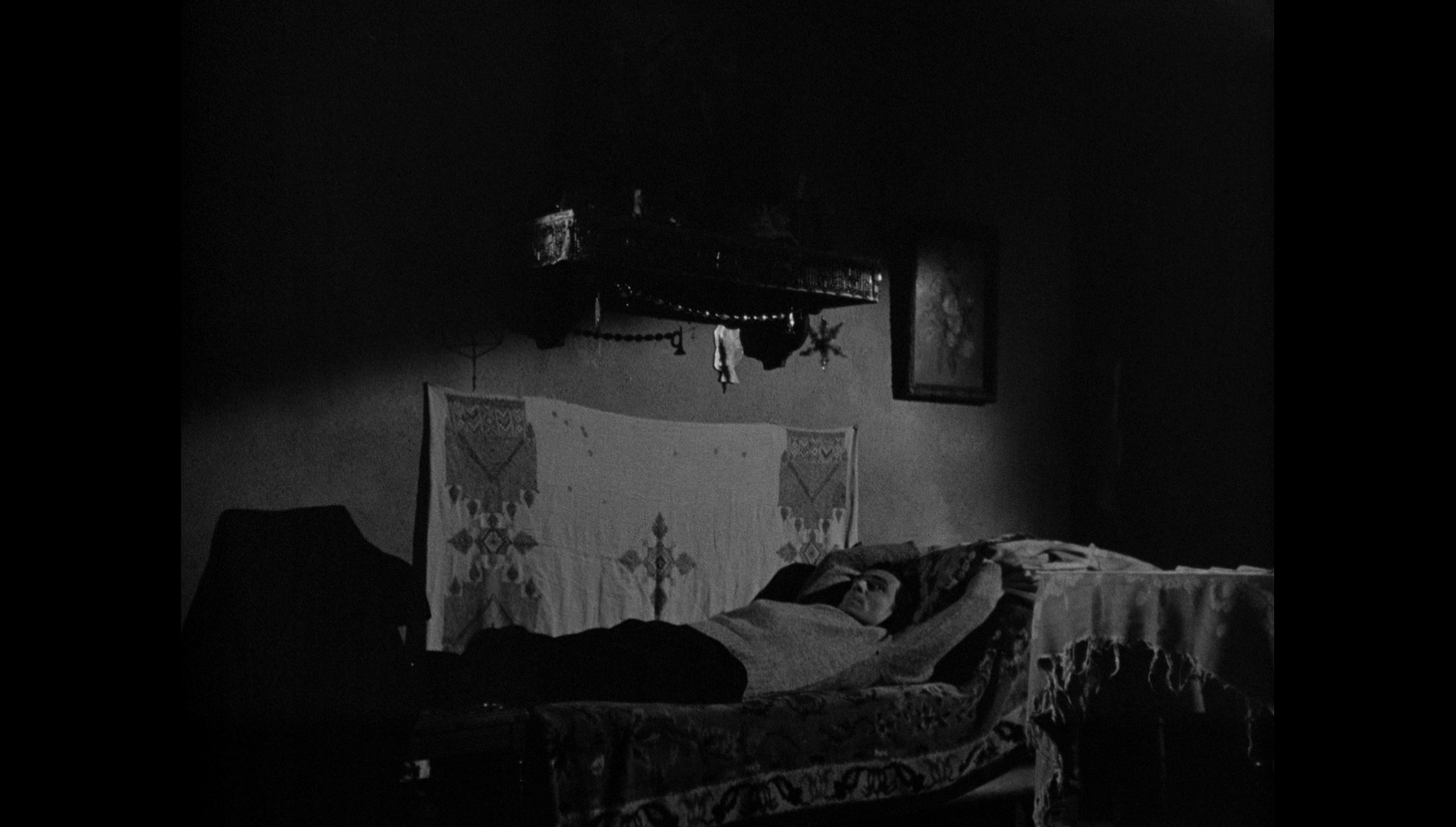
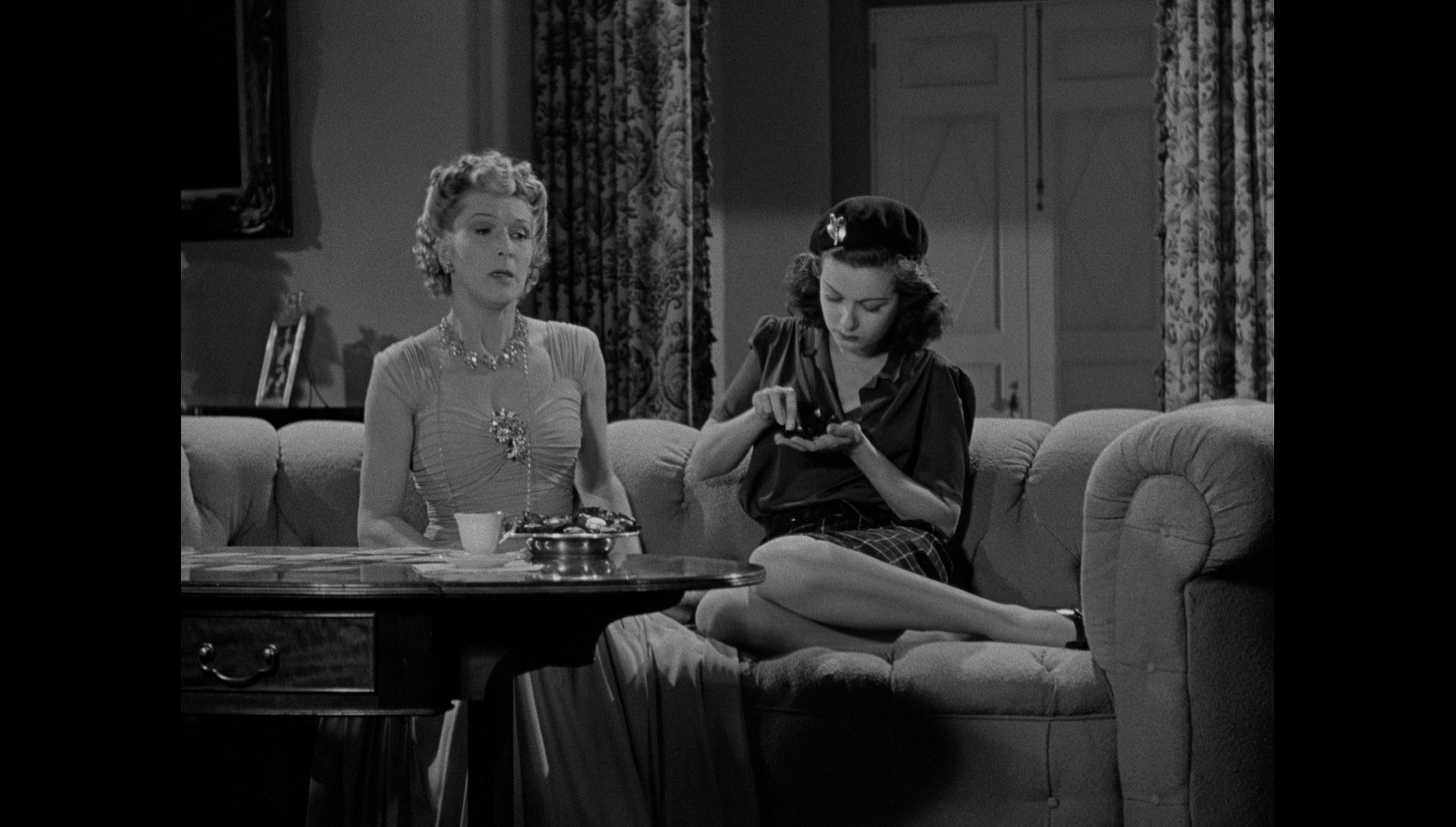
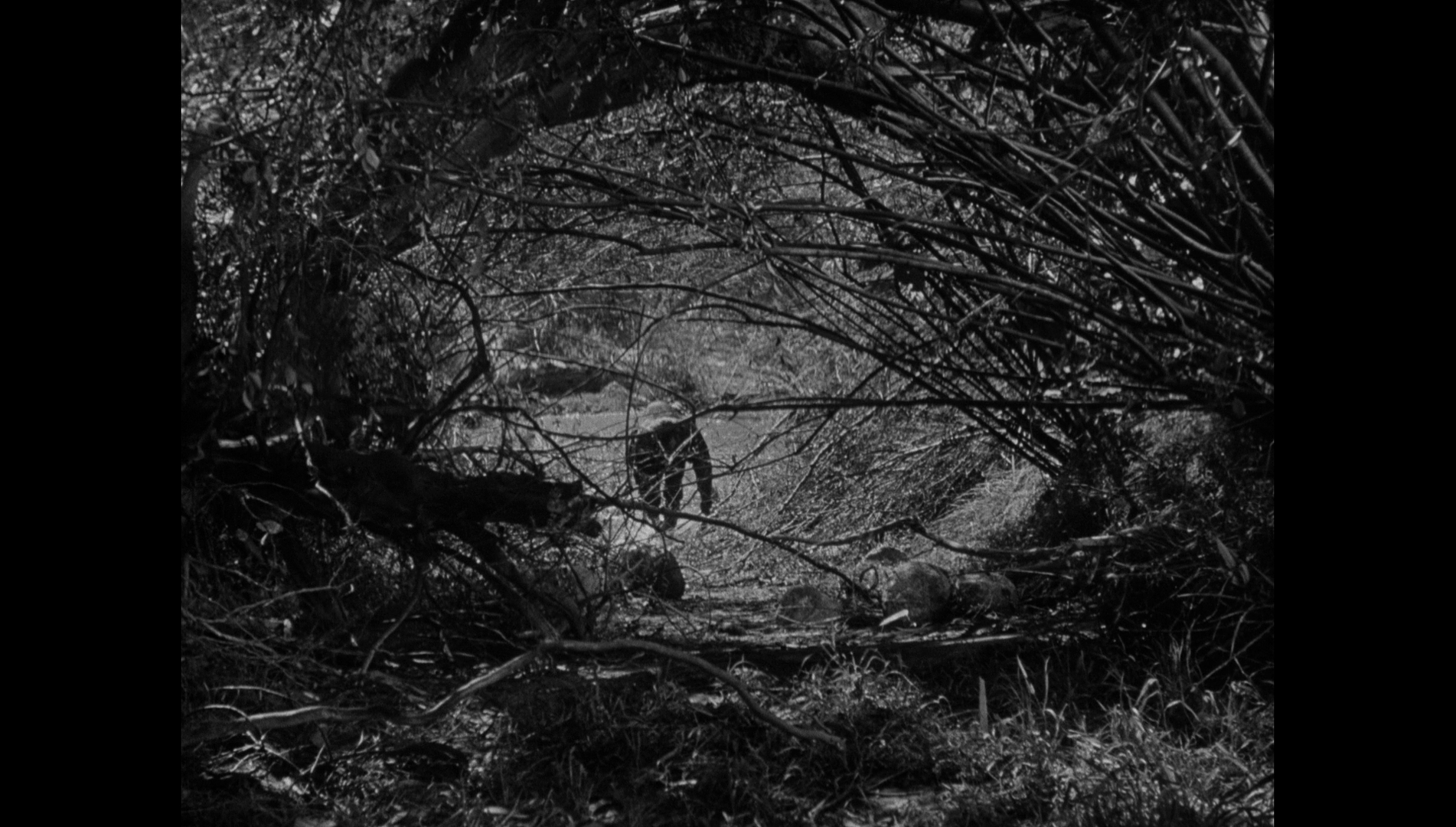
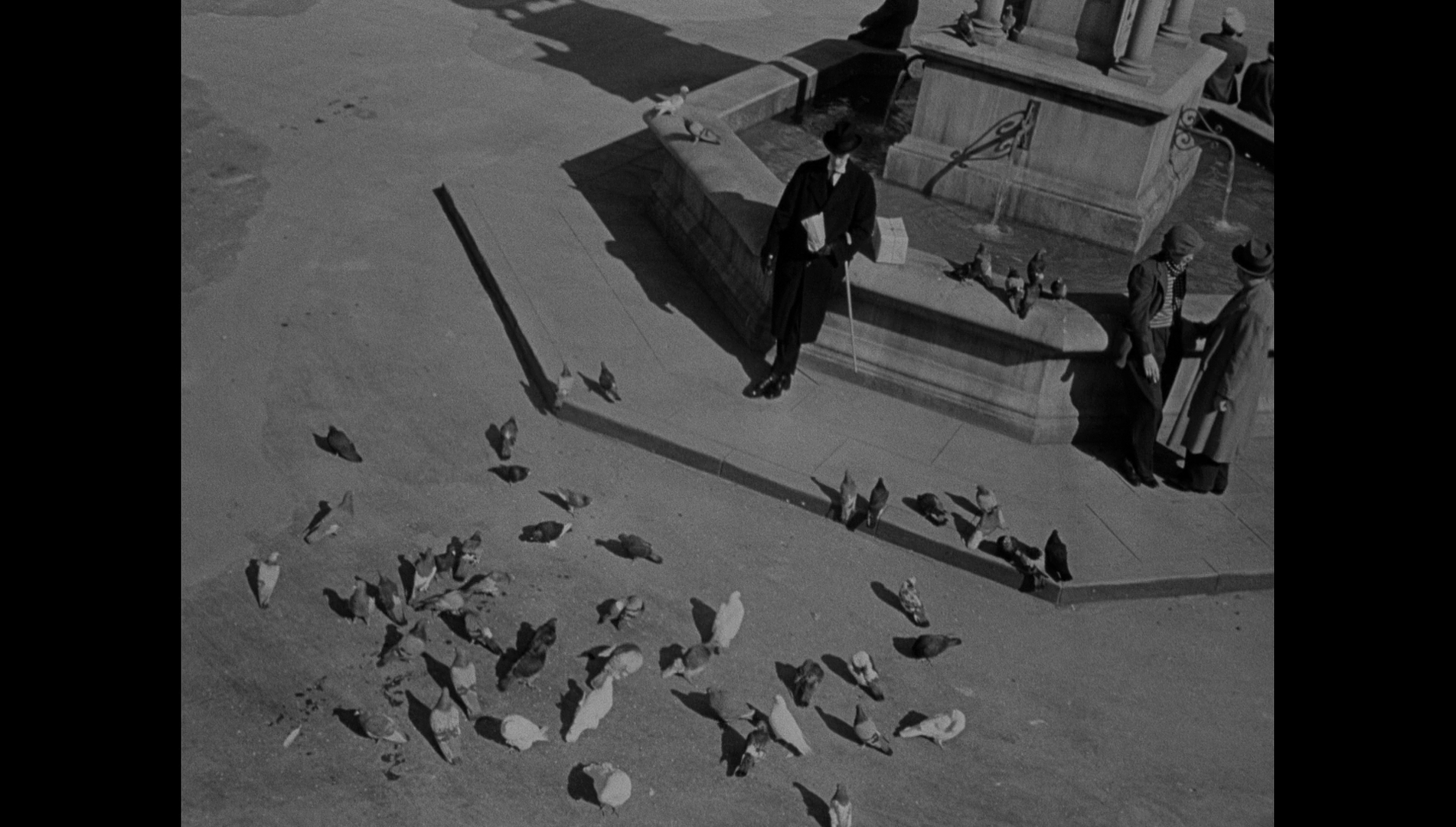
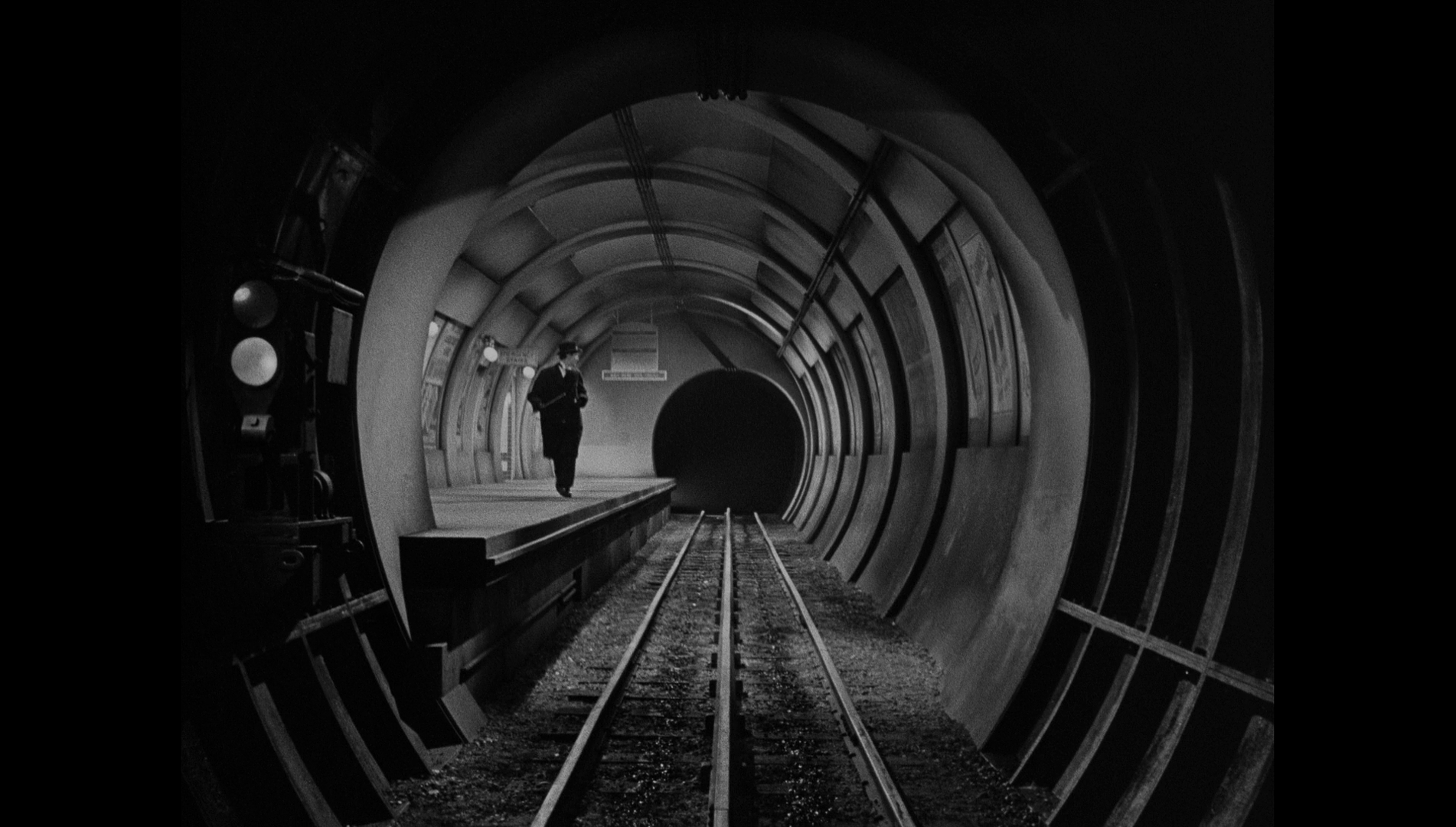
|
|||||

|